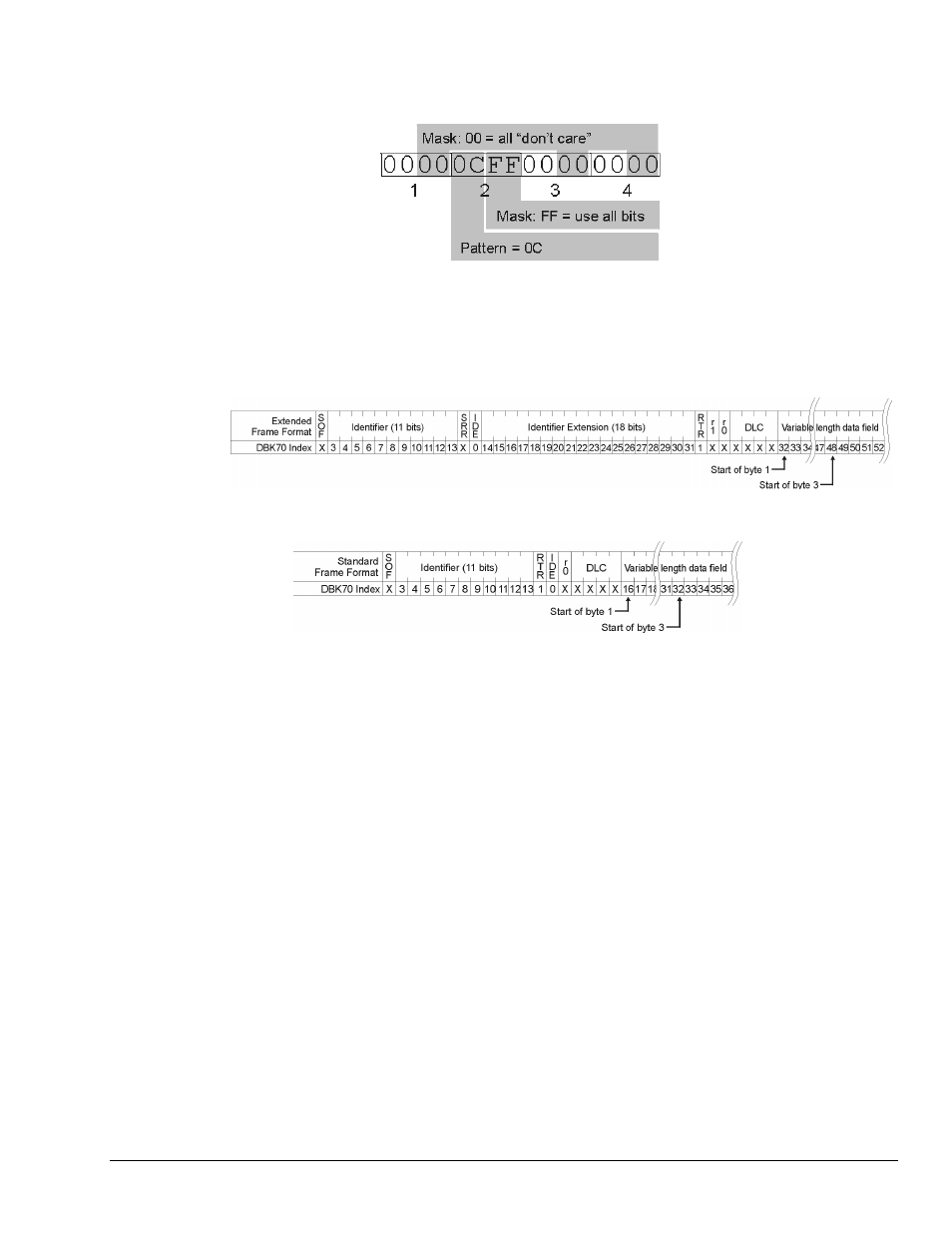Measurement Computing DBK70 User Manual
Page 81

DBK70 User’s Manual
928494
Fundamentals of Obtaining Vehicle Data 6-15
The don’t care bits are used in instances where specific bit values in the header are not significant.
For example, if only the 2
nd
byte in the data frame is significant, the Filter field would appear as follows.
In this example, any header with a 2
nd
byte of 0C(hex) would be accepted and its parameter value would
be processed, regardless of the byte values found in the other header bytes.
The Index and Length values define where in a received message, that has passed the Filter, the desired
data starts and how long it is. See the Index numbers in the diagram below. For CAN Extended Format,
the index of the 1
st
data bit is 32. Additional bytes will be at multiples of 8 bits (32, 40, 48, 56…).
Indexes for Extended Frame Format
Indexes for Standard Frame Format
Many Data Frames contain several data items. To capture individual items in a Data Frame containing
more than one data item, create multiple DBK70 database records – one for each data item of interest.
The fields in these database records will be identical except for the Index and possibly the Length fields.
The Length value is typically in multiples of 8 bits (8, 16, 24, 32, ….). Occasionally, the data is one or
a few bits in size. In these cases the Length value would be 1, 2, 3, etc. If the length of the data is one byte,
the Length value will be 8.
The Storage Type value indicates whether the data should be processed as 2’s complement signed data or
as unsigned data. Most data is unsigned, but once in a while data is signed. Another way to look at this is to
ask if the raw data in the received message can be negative. This does not refer to the scaled value of the
data, only to the raw data in the received message.
Received data is multiplied by the value of the Output Scale field and the result of that multiplication is
added to the value of the Output Offset field (i.e., y = m * x + b, where x is the received data, m is the
Output Scale, b is the Output Offset, and y = the scaled result). The values of Output Scale and Output
Offset depend on the resolution of the received data, the range of the scaled data derived from the received
data, and the desired range and lowest value of the proportional output signal.